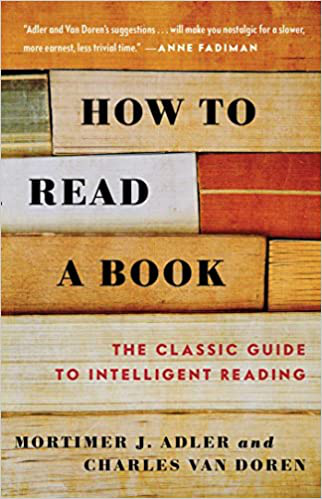How To Read A Book
Perhaps one of the most confounding phenomena of our generation is that conquering illiteracy has not necessarily made us feel that our world is smarter.
There are many reasons for this trend, but one simple item to consider is the simultaneous rise in literacy and the, presumably, stagnant rates of actual comprehension of that reading: Perhaps the majority of people are literate, but they do not really know how to read.
Subsequently, the greatest challenge in attempting to read this book will likely be the natural inclination to think to oneself, “What nonsense – I already know how to read!” But in holding that belief, one may very well be blocking themselves from discovering the keys to unlocking vibrant pathways to a more expansive world view.
Popular Models 🐝
The most well-known takeaway from this book is the outline of the 4 levels of reading, which include elementary, inspectional, analytical, and syntopical reading.
Elementary reading is the ability to transform shapes and squiggles on the page into meaning and the ability to draw from contextual clues reasonable inferences. For example, to be able to guess the meaning of an unknown word in a sentence. Mastering this level of reading means one “must be able to make sense of a majority of [their reading], although not necessarily the best sense of all of them.”
Inspectional reading comes in two flavours: Skimming and superficial reading. Both have the aim of getting the gist of a book in a short-ish amount of time. The former is generally for deciding whether to read a book and the latter to quickly grasp a book. It is understood that neither of these will give you a particularly deep understanding of its contents, unless the material is not particularly difficult or deep, in which case a superficial reading may suffice.
Here, the focus is on time. You are trying to get from A to B because it is an intermediary step toward some larger goal – like determining if the book is worth reading.
In analytical reading, the reader is decidedly the disciple to the author. They aim to stretch their mind to get whatever was being got at. There are three major stages: Outlining, which focuses on breaking down the physical structure of the book internally as well as it’s place in the world. Interpretation, involves building up meaning from words and sentences to terms and propositions which build toward arguments, and whether the work provides solutions to given problems. Criticism, the final stage, has politeness prerequisites: First understanding a book before criticizing, be honest as you criticize, and provide evidence and reasons for your criticism. Criticism itself is the duty of the reader to come to some stance with regard to the work, to align onesself with truth and what is true, to discover lack of soundness (uninformed, misinformed, illogical, or incompleteness) of an author’s argument, and to agree, regardless of one’s own desire1 with the author if their arguments prove sound.
It is one’s duty to criticize books they read and difficult books should always be read once superficially, then read more thoroughly; analytically.
In syntopical reading, the reader becomes the master and sets the terms, so to speak. The preliminary step is to create a bibliography, which is likely built with the aid of other bibliographies. Inspect those books and slim down the bibliography to the books that prove relevant upon closer inspection. From there, the steps for syntopical reading are as follows: Inspect the relevant passages of all the books, which may or may not require interpreting the author’s original intent and purpose to fit yours. Establish neutral terms and propositions which the authors are to be brought to (remember, you’re the read-fu master now). Identify controversy, which are the issues that multiple authors provide conflicting claims for. Finally, analyze the discussion by giving it order, to discover the truth. And even if that truth cannot immediately be reached, some deadwood can be cleared away for future work to be done.
Objectivity is key – if the syntopical analysis takes a view then it is merely another voice in the discussion, rather than an analysis of that discussion.
Hidden Gems in Plain Sight 🐝
There are many, many other things that can be said about how wonderful this book is, like how the author deftly weaves metaphor and reference throughout which hint at deep connections to cultural classics. So the writing simultaneously teaches how to read, while offering a peek into why various works are so influential in our culture. The overall structure that is easy to navigate and remember, down to individual examples that double as illuminating explanation and good life advice. The authors are masters of what they teach.
This book provides the steps for active reading and paves the path to really understanding what you read. With time, if you follow its rules, the algorithm that resides in these pages will become a part of you. Active reading that expands your capacity to understand will become an automatic habit and you will become a demanding reader. And only by becoming a demanding reader can you begin to master the art of reading.
“We must be more than a nation of functional literates. We must become a nation of truly competent readers, recognizing all that the word competent implies. Nothing less will satisfy the needs of the world that is coming.”
-
Caveat of value judgment differences between people, esp. due to biological temperament. ↩
